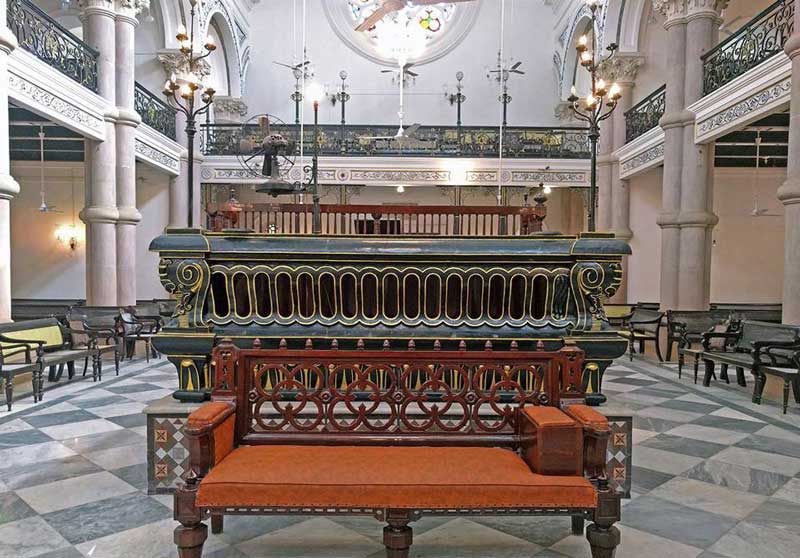
Located at the intersection of Canning Street and Brabourne Road, Neveh Shalome Synagogue is the first Baghdadi Jewish community house of prayer in India. It was built by Shalom Obaida-Ha-Cohen in 1831 in the memory of his father Shalom Ha-Cohen. This Shalom Ha-Cohen is the first recorded Jewish immigrant to Calcutta in 1798 from Aleppo in present day Syria. During those early days, Neveh Shalome was considered as the centre of Jewish mercantile, home, social, and religious life.
However, the original Neveh Shalome Synagogue was demolished in 1883 and the large Renaissance-Revival Magen David Synagogue was built on its site. Subsequently, at the instance of the Jewish community of Calcutta, the Neveh Shalome was also rebuilt by the side of the newly built Magen David Synagogue in 1910.

The Neveh Shalome is actually a very simple prayer hall. The building is neither very impressive, nor typically ornamented like the Magen David Synagogue, which is situated right beside it. Its symmetrical, tripartite façade is made up of a central mass, flanked by smaller side bays. At the ground level, the central mass serves as a portico with a wide archway that provides access to a foyer, leading into the synagogue’s sanctuary.
Along the heavy-handed façade and other elevations of the synagogues are rounded-arched windows with painted louvered shutters. The walls of the rectangular sanctuary are painted white and the room contains a centrally-positioned tebah, which is a raised platform with a table for reading the Torah. It is properly equipped with rows of adequate seating arrangements for assembly and like the other synagogues, it also has an upper floor, complete with an altar for the Jewish marriage ceremony, called Hoopa.

There was a day, when the Jewish community of Calcutta was around 6,000 strong and along with their business, they kept their marks in the city of palaces, notably with many magnificent buildings. However, the independence of India in 1947 and the subsequent birth of the Jewish state of Israel in 1948 marked the drastic decline of the Jewish population in the city. As their number increasingly decreased, services in the synagogues gradually diminished and finally stopped.
They were left in neglect and uncared for quite a long time. Only in the 2000, the Archeological Survey of India declared the Beth El and the Magen David Synagogue as heritage sites. Accordingly, they were brought under the protective wings of the ASI and both the structures were restored to their former glory.


However, for reasons unknown, the Neveh Shalome was not fortunate enough to earn the heritage tag and remained neglected. Much later, beginning in late 2013, the Jewish community of Calcutta took the initiative and the responsibility to restore and renovate the Synagogue.
